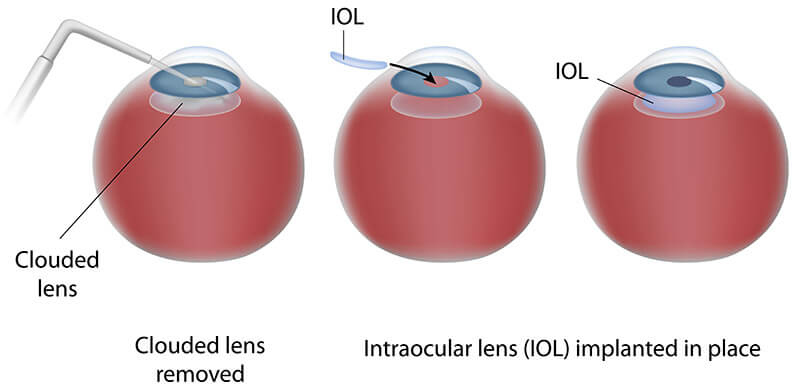Cataracts

Is your vision blurry, or do you feel like you’re looking at the world around you through a foggy window? You may have cataracts. At Inland Valley Surgery Center, we’re here to improve your vision so you can see the world more clearly.
What is a Cataract?
A cataract occurs when the eye’s natural lens becomes cloudy, leaving you with impaired vision. The natural lens before cataracts should be transparent and easy to see through.
However, when you have a cataract, the lens becomes opaque, eventually affecting your ability to see clearly. You may notice that your vision is blurry or that things around you look distorted.
Many patients with cataracts don’t realize they have them initially. Cataracts can take years to form and don’t typically affect your vision when they first form.
Although the most common reason cataracts develop is aging, you can also have cataracts due to genetics, eye trauma, taking certain medications, or certain medical conditions like diabetes. Cataracts can begin developing as early as your forties or fifties, even if you don’t realize you have them.
What Are the Signs of Having a Cataract?
You could have a cataract if you’ve started noticing things like:
- Blurry vision
- Increased light sensitivity
- Finding it more challenging to drive at night due to glare, halos, and starbursts
- Colors lose their vibrance
- Experiencing double vision in only one eye
- Needing far more frequent changes to your glasses or contact lenses prescription
When Should Cataracts Be Removed?
Although you may find out you have cataracts, that doesn’t necessarily mean you need to remove them immediately. Most cataract surgeons only recommend removing cataracts when they make it harder to complete your daily routine.
Are you struggling to make dinner for your family? Can you no longer curl up with a book and read because of your worsening vision?
If cataracts have made even the simplest everyday tasks too challenging, you should talk to your ophthalmologist about when to have cataract surgery. But if you have cataracts and can still do the things you love, you may not need to have the procedure yet.
Monitoring the progression of cataract development will ensure you remove your cataracts at the right time.
What to Expect During Cataract Surgery
Cataract surgery is one of the most common surgical procedures. During cataract surgery, your surgeon will first give you numbing eye drops to ensure you won’t feel any pain.
You may also receive a mild sedative to help you remain calm if you’re anxious. After the drops have spread over the surface of your eye, your surgeon will begin by creating a small incision to remove your natural lens.
The incision will provide them access to the natural lens, which they will break into smaller pieces before removing it. Removing the lens also removes your cataract. After removing any parts of the lens, your surgeon will insert your intraocular lens or IOL.

The IOL replaces the natural lens and takes over the job it can no longer complete, allowing you to see clearly. No stitches or sutures are usually needed, and the incision will heal on its own.
There are various types of IOLs. Usually called a premium lens or multifocal lens, your cataract surgeon will discuss these options with you.
You may experience some mild irritation or discomfort as you recover from cataract surgery in the days after your procedure. However, most patients find they can return to what they love in almost no time while enjoying significantly improved vision.



